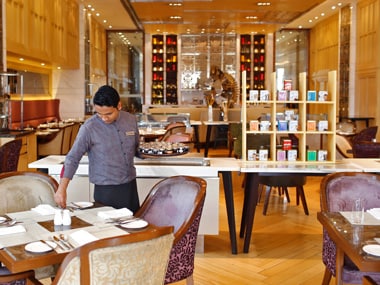The two-day GST Council meeting is underway at Guwahati to review the progress of the new tax regime three months after it was rolled out. The meeting is a closed door event with the media not allowed to cover it. However, a formal briefing will be made on Friday after the conclusion of the meeting. The 23rd meeting of the GST Council will be deliberating on the impact on the small scale industry, exemption to small traders and issues related to maximum retail price (MRP). Finance Minister of Assam Himanta Biswa Sarma had told reporters on Monday, after reviewing the preparations for the meeting that these were the issues that the meeting would take up. “The meeting will be important as it will review the progress of the new tax regime three months after it was rolled out. It is a milestone meeting,” Sarma was quoted as saying in a report in PTI. The reports of the three committees currently working on GST are also likely to be taken up at the meeting that will review the progress and impact of the GST at the completion of the first quarter, he had said. The committees include rate fitment committee, G[caption id=“attachment_4202805” align=“alignleft” width=“380”]  Representational image. Reuters[/caption]oM (group of ministers) headed by Sarma working on making the GST composition scheme more attractive besides the one working on the GST Network. The full council headed by Union Finance Minister Arun Jaitley will meet on Friday. Around 200 participants is learnt to be attending the meeting. There have been many reports in the media on the likely steps that the Council is likely to take to ease the pain for businesses. Here are some of them: Lower tax rates The Council is expected to lower tax rates on a host of goods such as handmade furniture, plastic products and daily use items like shampoo. According to Bihar Deputy Chief Minister Sushil Kumar Modi, who is also a member of the GST Council, tax rates on 80 percent items in the top 28 percent slab are likely to be slashed at the meeting. This would mean nearly 200 items are likely to become cheaper post the council’s meeting. “Tax rates on 80 percent of 227 items falling in top slab is likely to be reduced from 28 percent to 18 percent in the next GST council meeting. The GST fitment committee has also recommended reducing tax rates from 18 percent to 12 percent on a number of goods,” Modi was quoted as saying in a PTI report. According to him, the rates have been slashed on more than 100 items so far. In further relief to small and medium enterprises, the panel is likely to rationalise tax rates in sectors where the total incidence of taxation has gone up because the goods were earlier either exempt from excise or had attracted lower VAT rates in the previous indirect tax regime. Relief for restaurants: The Group of Ministers headed by the headed by Assam finance minister that deliberated on making GST implementation easier had suggested doing away with the tax rate distinction between AC and non-AC restaurants, those which are not covered under composition scheme, and tax them at 12 percent with input credit. The council is expected to take a decision on this. If this recommendation is accepted, eating out will become cheaper. Easier returns filing The Council may decide to simplify filing tax returns further. The move will help the SMEs who have been reeling under the compliance burden. The government had recently extended the due date by a month for filing of GSTR-2 to 30 November and returns-3 to 11 December. The move comes after complaints from businesses about problems in matching invoices while filing GSTR-2 on the GST Network portal. This is the first month of filing GSTR-2. Form GSTR-2 reflects purchases made by a business whereas GSTR-3 is a combination of sales and purchases. Form GSTR-2 reflects purchases made by a business whereas GSTR-3 is a combination of sales and purchases. Incentives for digital payments Apart from putting in place these basic and much-needed reforms in the five-tier GST structure, the Council most likely will chalk out a plan to promote digital payments which is part of government’s cashless economy push. According to a report in Economic Times, the Council may take up for discussion some incentives for transactions done using the internet. An unidentified government official told ET, “There is a thinking that digital transactions need to be incentivised… The council will look at what could be done.” The Council may support merchants and customers involved in digital transactions with certain incentives so as to discourage cash payments and promote a less cash economy being promoted by the incumbent Modi government. The Council may propose credit in return and also may back certain exemptions from Central GST and State GST for transactions made electronically. The report further adds the central government may incorporate a built-in incentive in the GST structure that will make digital payments a more viable option for merchants and customers. The Council is also likely to take a call on Merchant Discount Rates, a transaction fee levied for facilitating digital payments. At present, MDR on credit cards runs from 0.25 percent to 1 percent. There’s no limit on MDR for credit cards. (With inputs from PTI)
A ministerial panel had suggested doing away with the tax rate distinction between AC and non-AC restaurants, and both at 12 percent with input credit
Advertisement
End of Article


)




